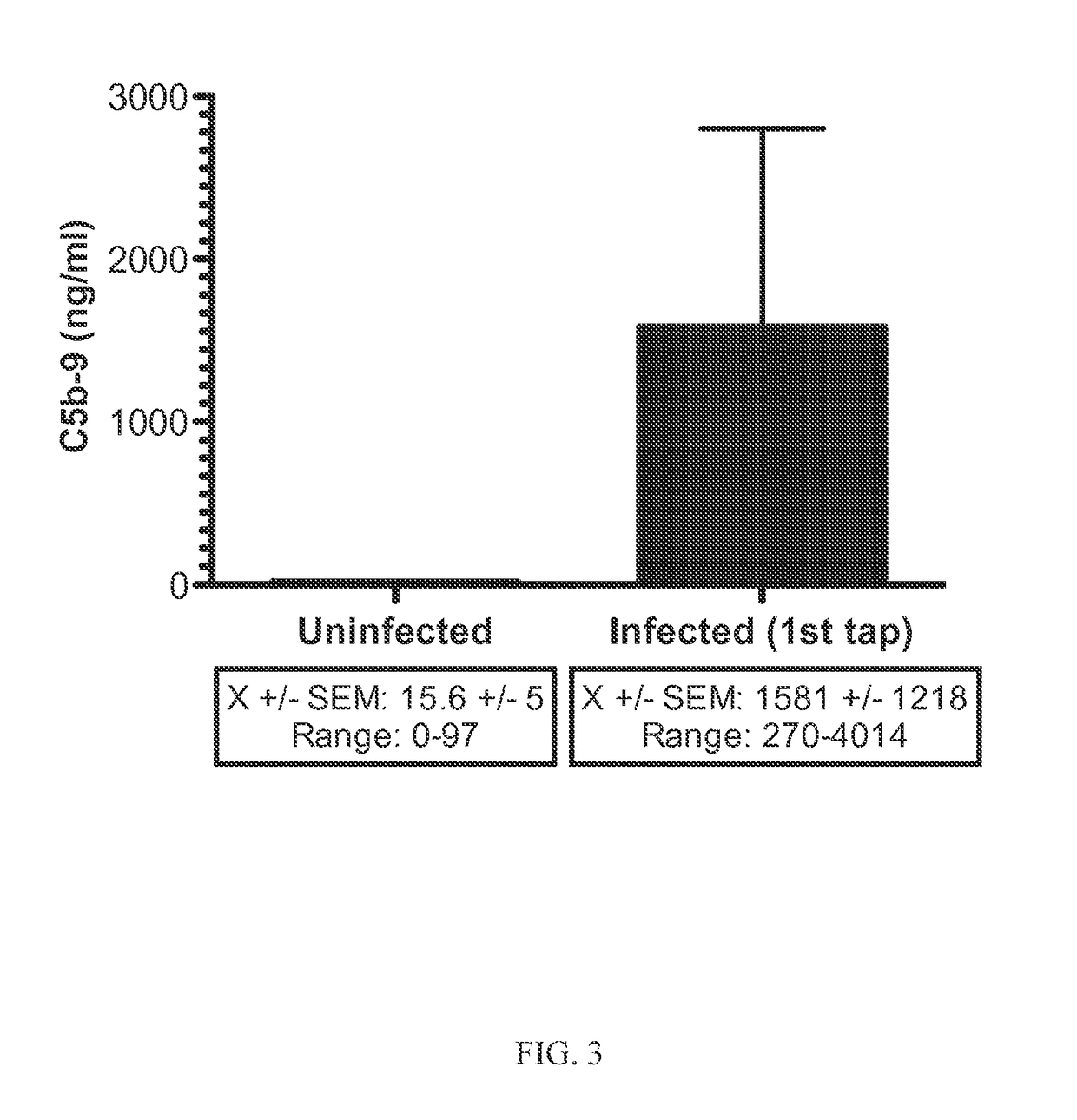Methods and compositions for diagnosis and treatment of meningitis
- Summary
- Abstract
- Description
- Claims
- Application Information
AI Technical Summary
Benefits of technology
Problems solved by technology
Method used
Image
Examples
example 1
C3 and Factor B (FB) as Bacterial Meningitis Biomarkers
[0162]Bacterial meningitis is characterized by high mortality and a high rate of persistent neurological impairment. Rapid etiologic diagnosis is essential for the adequate clinical management of patients with bacterial meningitis. Unfortunately, non-specific clinical symptoms and early laboratory findings often do not unequivocally differentiate between bacterial and aseptic meningitis. Therefore, the identification of a single discriminating parameter would be of high value in the differential diagnosis of acute meningitis.
[0163]This invention provides a method of diagnosing bacterial versus aseptic meningitis based on changes in the cerebrospinal fluid (CSF) levels of specific complement proteins, including, but not limited to C3, factor b (FB), MAC, C5b, C6, C7, C8, and C9 compared to normal CSF levels. The invention is based on the discovery that the CSF level of many complement proteins, which is normally low (nanogram to ...
example 2
C9 as a Bacterial Meningitis Biomarker
[0168]A separate, but integral part of the pathogen clearance, the terminal complement pathway includes many different proteins. One of these, C9, is critical for the formation of the membrane attack complex (MAC), a large pore-forming complex capable of lysing host pathogens including many bacteria and enveloped viruses. The MAC is composed of five complement proteins, C5b, C6, C7, C8 and multiple C9 molecules (ranging from 12-18 per MAC). C9 molecules in the MAC form the actual pore structure that inserts into bacterial membranes resulting in their osmotic lysis.
[0169]C9 is distinct from C3 and FB as a biomarker for bacterial meningitis because its function is unrelated to and independent of both proteins.
[0170]C9 is an acute phase protein; i.e., its production is elevated in response to inflammation due to trauma or infection. C9 has been shown to be transported across the blood-brain barrier at low levels in the absence of infection. This pr...
example 3
MAC as a Bacterial Meningitis Biomarker
[0174]A separate, but integral part of the pathogen clearance, the terminal complement pathway includes many different proteins. One of these, MAC is a large pore-forming complex capable of lysing host pathogens including many bacteria and enveloped viruses. The MAC is composed of five complement proteins, C5b, C6, C7, C8 and multiple C9 molecules (ranging from 12-18 per MAC). C9 molecules in the MAC form the actual pore structure that inserts into bacterial membranes resulting in their osmotic lysis.
[0175]MAC is distinct from C3 and FB as a biomarker for bacterial meningitis because its function is unrelated to and independent of both proteins.
[0176]Components of the MAC are acute phase proteins; i.e., their production is elevated in response to inflammation due to trauma or infection. Production of MAC subcomponents by several cells types in the central nervous system and other cell types is increased in response to inflammation and infection...
PUM
 Login to View More
Login to View More Abstract
Description
Claims
Application Information
 Login to View More
Login to View More - R&D
- Intellectual Property
- Life Sciences
- Materials
- Tech Scout
- Unparalleled Data Quality
- Higher Quality Content
- 60% Fewer Hallucinations
Browse by: Latest US Patents, China's latest patents, Technical Efficacy Thesaurus, Application Domain, Technology Topic, Popular Technical Reports.
© 2025 PatSnap. All rights reserved.Legal|Privacy policy|Modern Slavery Act Transparency Statement|Sitemap|About US| Contact US: help@patsnap.com



